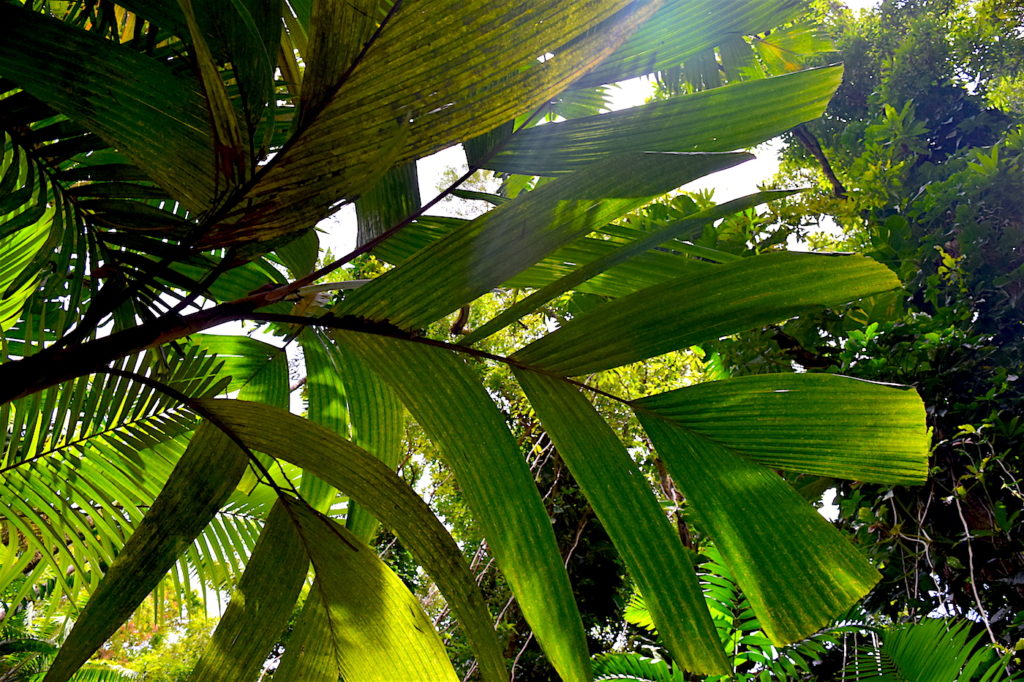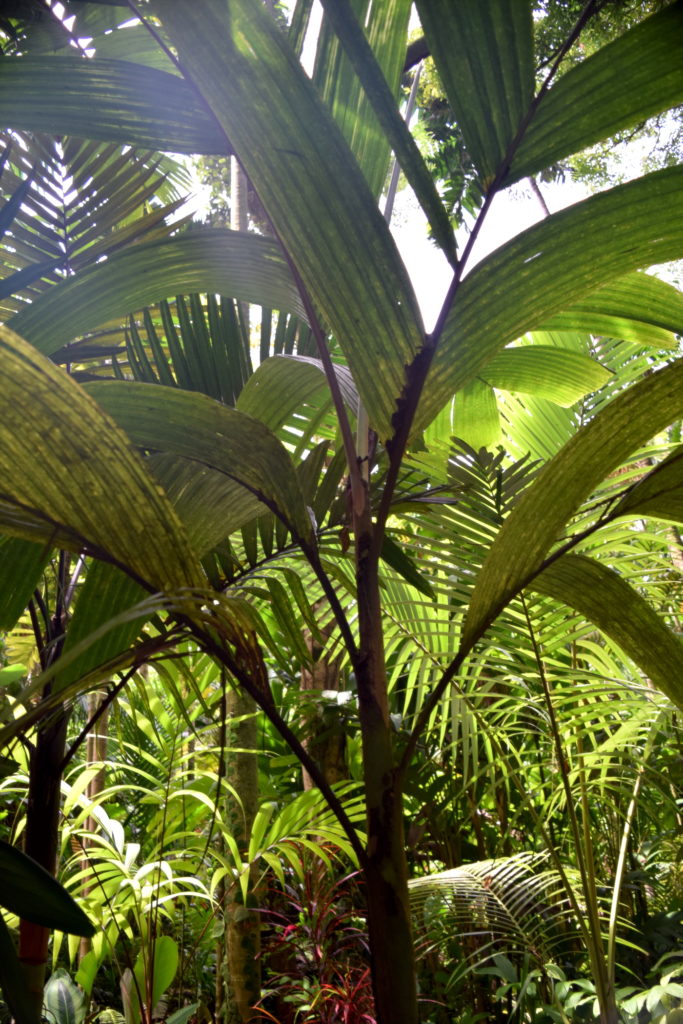
Hydriastele dransfieldii
Hydriastele dransfieldii is a small, monoecious, solitary palm native to Biak Island off the northwestern coast of New Guinea. Biak Island is located at 1 degree north of the equator, so this palm is of truly tropical origin, with an average annual rainfall of 122 inches on the island.
In its native habitat, Hydriastele dransfieldii is found from sea level to an elevation of 1000 feet. It grows on areas with very thin soil over limestone rock, and occasionally to grow out of the cracks in pure limestone. It grows up to approximately 6 feet tall.

This palm grows stiff leaflets that vary in width, but the widest leaflet can measure up to 10” wide and 30” long. The terminal leaflets are bifid (split) in form and have a jagged edge. The fronds emerge with an emerald green color and then mature to a very dark green. Emergent leaves have dark peach colored petioles and rachis. As the leaf matures, the petioles darken to a dark brown. This coloration on the rachis and petiole is due to the presence of indumentum (hairs and/or scales). The sheath is also covered by this same colorful indumentum.
The species name Hydriastele dransfieldii honors the renowned British palm taxonomist John Dransfield, formerly of the Royal Botanic Garden, Kew. (Fun fact: Dransfield did all of the taxonomy work at The Merwin Conservancy and plays an advisory role with the organization.)
There is one Hydriastele dransfieldii growing at The Merwin Conservancy on Maui.
Want to “virtually explore” the Merwin Palm Collection? Search through our archive of Palm Facts of the Week, featuring palms hand-planted by W.S Merwin. To search through the Online Merwin Palm Database, visit this link.
If you’re inspired to help The Merwin Conservancy preserve and care for the world-renowned Merwin Palm Collection into the future, please consider making a tax-deductible donation.
All photos by Sara Tekula for The Merwin Conservancy.

